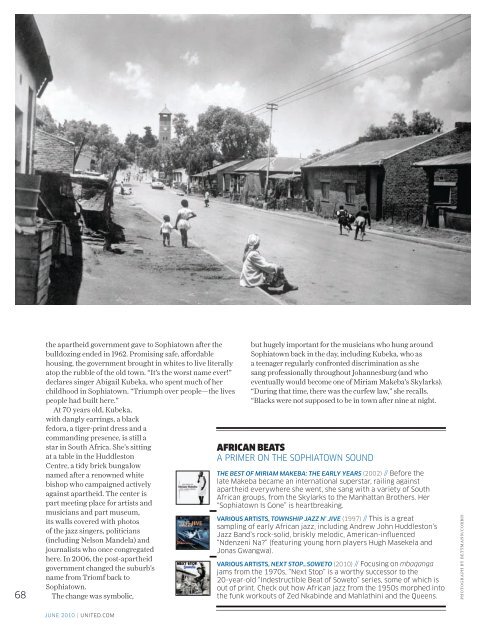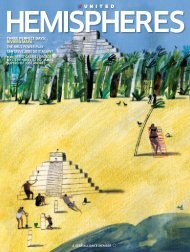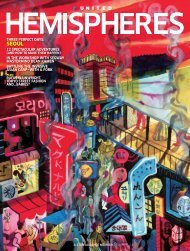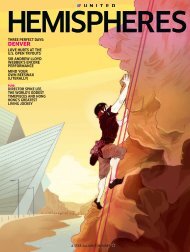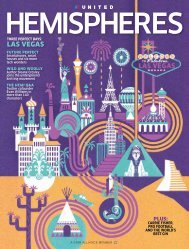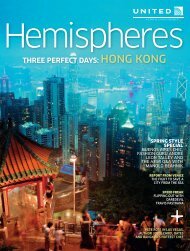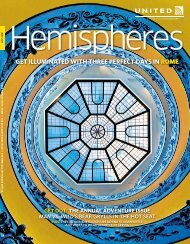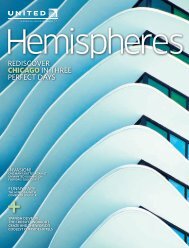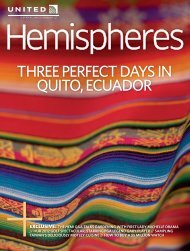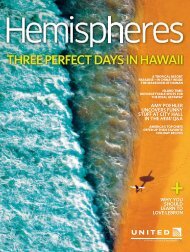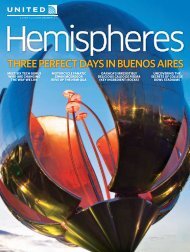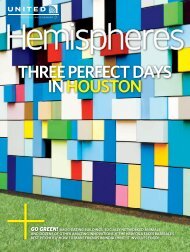june-2010
june-2010
june-2010
Create successful ePaper yourself
Turn your PDF publications into a flip-book with our unique Google optimized e-Paper software.
68<br />
the apartheid government gave to Sophiatown after the<br />
bulldozing ended in 1962. Promising safe, aff ordable<br />
housing, the government brought in whites to live literally<br />
atop the rubble of the old town. “It’s the worst name ever!”<br />
declares singer Abigail Kubeka, who spent much of her<br />
childhood in Sophiatown. “Triumph over people—the lives<br />
people had built here.”<br />
At 70 years old, Kubeka,<br />
with dangly earrings, a black<br />
fedora, a tiger-print dress and a<br />
commanding presence, is still a<br />
star in South Africa. She’s sitting<br />
at a table in the Huddleston<br />
Centre, a tidy brick bungalow<br />
named after a renowned white<br />
bishop who campaigned actively<br />
against apartheid. The center is<br />
part meeting place for artists and<br />
musicians and part museum,<br />
its walls covered with photos<br />
of the jazz singers, politicians<br />
(including Nelson Mandela) and<br />
journalists who once congregated<br />
here. In 2006, the post-apartheid<br />
government changed the suburb’s<br />
name from Triomf back to<br />
Sophiatown.<br />
The change was symbolic,<br />
JUNE <strong>2010</strong> | UNITED.COM<br />
but hugely important for the musicians who hung around<br />
Sophiatown back in the day, including Kubeka, who as<br />
a teenager regularly confronted discrimination as she<br />
sang professionally throughout Johannesburg (and who<br />
eventually would become one of Miriam Makeba’s Skylarks).<br />
“During that time, there was the curfew law,” she recalls.<br />
“Blacks were not supposed to be in town after nine at night.<br />
AFRICAN BEATS<br />
A PRIMER ON THE SOPHIATOWN SOUND<br />
THE BEST OF MIRIAM MAKEBA: THE EARLY YEARS (2002) // Before the<br />
late Makeba became an international superstar, railing against<br />
apartheid everywhere she went, she sang with a variety of South<br />
African groups, from the Skylarks to the Manhattan Brothers. Her<br />
“Sophiatown Is Gone” is heartbreaking.<br />
VARIOUS ARTISTS, TOWNSHIP JAZZ N’ JIVE (1997) // This is a great<br />
sampling of early African jazz, including Andrew John Huddleston’s<br />
Jazz Band’s rock-solid, briskly melodic, American-infl uenced<br />
“Ndenzeni Na?” (featuring young horn players Hugh Masekela and<br />
Jonas Gwangwa).<br />
VARIOUS ARTISTS, NEXT STOP…SOWETO (<strong>2010</strong>) // Focusing on mbaqanga<br />
jams from the 1970s, “Next Stop” is a worthy successor to the<br />
20-year-old “Indestructible Beat of Soweto” series, some of which is<br />
out of print. Check out how African jazz from the 1950s morphed into<br />
the funk workouts of Zed Nkabinde and Mahlathini and the Queens.<br />
PHOTOGRAPH BY BETTMANN/CORBIS


